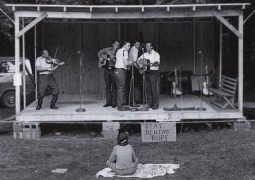
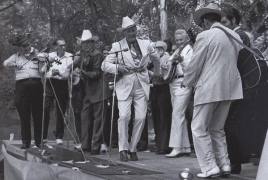
The Monroe Brothers were one of the most popular
duet of the 1920s and 1930s. Charlie played the guitar, Bill played the
mandolin and they sang in harmony. When the
brothers split up, both went on to form their own bands.
Bill Monroe & The Blue Grass Boys soon
became a very popular act. Bill's new band was
different because of playing folk music with overdrive (Lomax).
Bill used the old music, but he invented bluegrass with it. In that day it was Punk, it was Hip-Hop. He took the old music and he made it new. (J. Ritchie)
He incorporated songs and rhythms from gospel, country and blues repertoires, and
settled on mandolin, banjo, fiddle, guitar and
bass as the format for his band.
As an ensemble musical form bluegrass reflects and echoes not only its rural roots but also the urban and industrial life from which it emerged. As on an assembly line, each musician has a special part to sing and a special job to do on his or her instrument. (Rosenberg)
In 1946, banjo player Earl Scruggs
and guitar player Lester Flatt
joined the band. Scruggs and Flatt eventually formed their own
group, The Foggy Mountain Boys, and included the dobro guitar into their
band format. By the 1950s, people began referring to this style
of music as bluegrass. Bluegrass bands
began forming all over the country. By the early 70s hundred of bluegrass festivals sprung up and that was where
Carl Fleischhauer and Neil V. Rosenberg entered the game.
Bluegrass Odyssey
is Fleischhauer's legacy of accompanying the bluegrass community
with his camera for nearly twenty years, interspersed with Rosenberg's narrative.
In the first chapter, "Intensity," we offer a group of photos chosen to convey first impressions of the music itself. The intensity of bluegrass performance was one of the things that attracted us to the music.
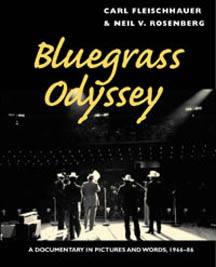 It's hard work, yet they seem to be relaxed and happy.
The lyrics often tell sad stories at toe-tapping or breakneck speed.
It's hard work, yet they seem to be relaxed and happy.
The lyrics often tell sad stories at toe-tapping or breakneck speed.
The pictures in the second chapter, "Destination," follow our own experience as our interest expanded from the music to its cultural context, from the sound to ethnography: musical instrument merchants, an Opry star grabbing a meal before the show, and a cross section of performance venues.
The third chapter, "Transactions," documents the production of sound recordings, paid performances, the sale of merchandise. But the chapter also highlights the nonmonetary exchanges that occur within these activities--for example, determining the sequence of songs in a set or the order of bands during a festival afternoon.
In the fourth chapter, "Community," the pictures interpret the human connections that tie individuals together. The fifth chapter, "Family," surveys one such connection, principally among performers.
The last chapter, "The Monroe Myth," is a meditation on an individual--arguably the leading figure in bluegrass music--and his family. Words and pictures take you on the road with Monroe, visiting his birthplace in Rosine, Kentucky,
and the graveyard in which his parents are buried.
203 photographs cover festivals and bars,
rednecks and hippies alike, during an era
when most of the founders were still alive and actively performing:
Bill Monroe himself,
Lester Flatt,
Earl Scruggs,
Ralph Stanley,
The New Grass Revival etc.
From western-style suits and shirts, scarves or neckties, and hats
to performers who imported repertoire, musical sensibilities, grab, hair length, and other trappings of countercultural style from rock.
Until the 1970s bluegrass musicians sang and played into one or two microphones. With four, five, or six musicians onstage using acoustic instruments without electric pickups, distance from and direction toward the microphone determined much of what the audience heard. The legendary choreography of Lester Flatt, Earl Scruggs, and the Foggy Mountain Boys enabled them to gang around the mike to deliver five-part harmony, along with his rhythm guitar and the backup work on the banjo and on the dobro. The dynamics of the music dictated dramatic shifts--movements toward and away from the microphone as instrumental breaks followed vocals. The first-generation bluegrass leaders spoke of their music in sports terms--the man at the mike was the batter or ball carrier. During the 1970s the number of microphones used onstage began to increase. In the mid-1990s, Doyle Lawson and Quicksilver spearheaded a return to the old single-mike technology, bringing back the choreography and blending that charmed early bluegrass audiences.
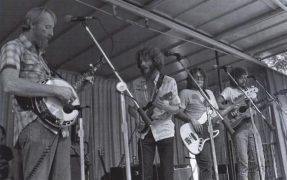
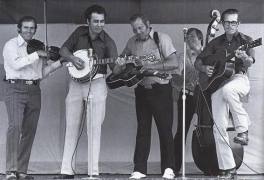
By the way, did you see
O Brother Where Art Thou?
The film is already two years old, but the soundtrack is still really hot
and the music goes from strength to strength.
What John Travolta's "Urban Cowboy"
achieved for country music in 1980,
has been revived twenty years later again by the Coen brothers.
O Brother topped the country charts last year and won five Grammy awards this year,
including an award for Album of the Year, defeating Bob Dylan and U2.
T-Bone Burnett was honoured as Producer of the Year.
The album also won best Compilation Disc, Country Collaboration with vocals
("I Am a Man of Constant Sorrow"), and best Male Country Vocal
(Ralph Stanley's "O Death").
Few people gave a bunch of little-known country musicians much chance of walking away with one of the most prestigious awards at the Grammys.
It has sold more than four million copies and has been one of the most unexpected hits of recent years.
Variously described as bluegrass, roots, mountain music and old-time country, it contains rustic sounds of harmonies, gospel choirs, mandolins, guitars, violins and banjos.
First popular in the 1920s and 1930s, the styles owe their comeback to the comedy film by Joel and Ethan Coen, which is based on Homer's Odyssey and stars George Clooney.
Veteran musician and producer T-Bone Burnett went about finding the songs for the film with singer-songwriter Gillian Welch.
One of the inspired choices was to revive a tune called I Am A Man Of Constant Sorrow, a folk song from the Appalachian mountains first recorded in 1922.
In the film, it became the anthem that made Clooney's band, The Soggy Bottom Boys, Depression-era stars.
In real life, it was recorded by Dan Tyminski, Harley Allen and Pat Enright.
Mr Tyminski provided the singing voice for Clooney on the film, and had to warn his wife, Elise, the first time they watched it that when Clooney would sing, she would really hear her husband's voice.
Your voice coming out of George Clooney's body? Dan, that's my fantasy! she replied.
While the film was an arthouse hit, nobody expected its music to go on to have so much success that it has taken on a life of its own.
First there was an O Brother concert in Nashville, then a documentary that had its own soundtrack, a United States tour and an O Sister album.
Mr Burnett also won a Grammy for a follow-up CD, Down from the Mountain.
And it has all happened with little radio airplay.
It may not be chart material - but that may be why so many people like it.
(BBC News)
Now, is there another Nashville? ...
... with a kind of music so distant from what the
city's commercial center cranks out as to be from a different planet. It
thrives in the community's nooks and crannies like a cluster of quietly
smiling mountain wildflowers in the shadow of those cultivated hothouse
blooms that flaunt their colors on radio stations from coast to coast.
The soundtrack celebrates this gentle music. What this seemingly ethnic sound is, is country
music. Or at least it was before the infidels of Music Row expropriated
that term to describe watered-down pop/rock with greeting-card lyrics.
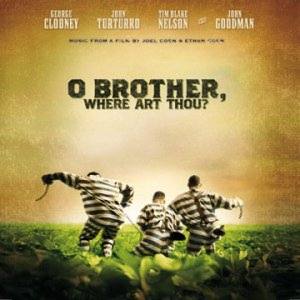 This original country sound first flowered during the Depression. It was fertilized by blues,
gospel, string-band hoedowns, Appalachian balladry, work songs and
vaudeville hokum. Its practitioners were small-time entertainers who led
itinerant lives as they traveled from one schoolhouse show to the next,
from one radio barn dance to the next, from one makeshift recording
studio to another.
Despite the hard economic times, record companies and radio stations
discovered an enormous hunger for the homey sounds of The Carter Family,
the rowdy blues of Jimmie Rodgers, the saucy humor of Uncle Dave Macon,
the dazzling fiddling of Arthur Smith and the scintillating blues moans
of countless slide guitarists, harmonica men and jug-band songsters. That
hunger for emotional truth gave us our multi-million dollar music
industry.
The razzmatazz of western swing, the whipped-dog whine of honky-tonk
music, the creamy crooning of singing cowboys, the itchy-pants yelp of
rockabilly and the suburban gleam of The Nashville Sound seemed to drown
out the innocence of this rustic, acoustic kind of country. But it has
survived. Now called "old-time music" this style thrives at the more than
500 bluegrass festivals, fiddle contests and folk gatherings that are
staged every year in America.
You won't hear it on country radio. And it flies beneath the commercial
radar of most record shops. So for those whose musical tastes are shaped
by the great, gray behemoth that is the modern entertainment business,
this music does sound obscure. Even exotic.
The reason for our using so much of the era's music in the movie was
simple, explains Ethan Coen. We have always liked it. The mountain
music, the delta blues, gospel, the chain-gang chants, would later evolve
into bluegrass, commercial country music and rock 'n' roll. But it is
compelling music in its own right, harking back to a time when music was
a part of everyday life and not something performed by celebrities. That
folk aspect of the music both accounts for its vitality and makes it fold
naturally into our story without feeling forced or theatrical.
(Extra TV)
This original country sound first flowered during the Depression. It was fertilized by blues,
gospel, string-band hoedowns, Appalachian balladry, work songs and
vaudeville hokum. Its practitioners were small-time entertainers who led
itinerant lives as they traveled from one schoolhouse show to the next,
from one radio barn dance to the next, from one makeshift recording
studio to another.
Despite the hard economic times, record companies and radio stations
discovered an enormous hunger for the homey sounds of The Carter Family,
the rowdy blues of Jimmie Rodgers, the saucy humor of Uncle Dave Macon,
the dazzling fiddling of Arthur Smith and the scintillating blues moans
of countless slide guitarists, harmonica men and jug-band songsters. That
hunger for emotional truth gave us our multi-million dollar music
industry.
The razzmatazz of western swing, the whipped-dog whine of honky-tonk
music, the creamy crooning of singing cowboys, the itchy-pants yelp of
rockabilly and the suburban gleam of The Nashville Sound seemed to drown
out the innocence of this rustic, acoustic kind of country. But it has
survived. Now called "old-time music" this style thrives at the more than
500 bluegrass festivals, fiddle contests and folk gatherings that are
staged every year in America.
You won't hear it on country radio. And it flies beneath the commercial
radar of most record shops. So for those whose musical tastes are shaped
by the great, gray behemoth that is the modern entertainment business,
this music does sound obscure. Even exotic.
The reason for our using so much of the era's music in the movie was
simple, explains Ethan Coen. We have always liked it. The mountain
music, the delta blues, gospel, the chain-gang chants, would later evolve
into bluegrass, commercial country music and rock 'n' roll. But it is
compelling music in its own right, harking back to a time when music was
a part of everyday life and not something performed by celebrities. That
folk aspect of the music both accounts for its vitality and makes it fold
naturally into our story without feeling forced or theatrical.
(Extra TV)
The soundtrack kicks off with James Carter's "Po Lazarus",
recorded by the late Alan Lomax (see news section).
His daughter Anna Lomax-Chairetakis explains:
The opening song of the soundtrack and
the film is a field recording that
Alan made in the 1950s in Parchment
Penitentiary in Mississippi.
That's interesting too, because he
first had gone to Parchment with his
father in the early '40s with a disc
recorder. And when the tape machine
arrived he rushed down with paper
tape, which was all that was
available then, and recorded the
same people.
Then in the late '50s he went with
stereo, [making] the first field
recordings in stereo. And so that
song "Po' Lazarus" was one that he recorded in 1959.
It's played in its entirety --
that's the beauty of it.
They let it play out to the end.
It's not used as sort of a little
piece of effect, it's really given
its full beauty. Later on in the
movie there's a song called "Didn't
Leave Nobody But The Baby," which is
a lullaby that he recorded, sung by
a woman named Sydney Carter from
Senatopia, Mississippi. T-Bone Burnett made
a very nice arrangement of it, and
he added some verses. He had beautiful taste,
instead of distorting it or
cheapening it or something like
that. It was sung by Emmylou Harris
and Allison Krause. It's very pretty.
(Tech TV)
So in the end, we don't want to care too much about any mistakes during the making of the movie.
The beer bottle behind John Goodman in the picnic scene is
a modern day Budweiser bottle. --
In the scene where George Clooney and the guys meet Baby
Face, the money flying out from the back seat is currency from
today not the 20's or 30's. --
At the end of the movie when they sing "you are my
sunshine" they movie into a L.S. and you can see that the words
aren't synched in to their lips. --
While the three convicts and Tommy Johnson are recording
"A Man Of Constant Sorrow", you can see a clock behind George
Clooney. If you pay attention, you can see the hands of the clock
are in a different position every time the shot changes. --
The film takes place in the Thirties. The song "You are My
Sunshine" is featured, but was not recorded by Jimmie Davis (its
composer) until 1940 ...
(Movie Mistakes)
If you haven't seen the film yet, do it!
If you don't like movies, get the CD anyway!
T:-)M
Fleischhauer, Carl & Neil V. Rosenberg Bluegrass Odyssey - A Documentary in Pictures and Words, 1966-86.
University of Illinois, Champaign, IL, 2001, ISBN 0-252-02615-2, Hardcover, 190 pp, US$34,95.
Harvey, Steven, Bound for Shady Grove.
University of Georgia Press, Athens, 2000, ISBN 0-8203-2197-4, Hardcover, 157 pp, US$24.95.
Malone, Bill C., Don't Get above Your Raisin' - Country Music and the Southern Working Class.
University of Illinois, Champaign, IL, 2002, ISBN 0-252-02678-0, Hardcover, 392 pp, US$34,95.
O Brother-Links:
Movie & Soundtrack,
Down from the Mountain,
Lyrics
Black and white photographs are taken from "Bluegrass Odyssey".
Back to the content of FolkWorld Features
To the content of FolkWorld No. 23
© The Mollis - Editors
of FolkWorld; Published 9/2002
All material published in FolkWorld is © The
Author via FolkWorld. Storage for private use is allowed and welcome. Reviews
and extracts of up to 200 words may be freely quoted and reproduced, if source
and author are acknowledged. For any other reproduction please ask the Editors
for permission. Although any external links from FolkWorld are chosen with greatest
care, FolkWorld and its editors do not take any responsibility for the content
of the linked external websites.
FolkWorld - Home of European Music

Layout & Idea of FolkWorld © The
Mollis - Editors of FolkWorld
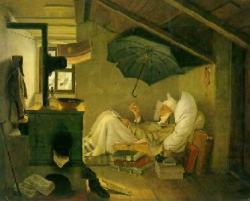 "No one
knows how--or where--our songs began. As Indo-European tribes migrated out of
the Caucasus, they must have brought the thunder and crack and rain of their
words and songs with them into the northern reaches of the European continent.
Folk music came across the Northern Sea to the coast of England on the lips
of Anglo-Saxon warriors in the fifth century. Eventually the songs spread everywhere
in the British Isles, though the stronghold for singing remained the point of
entry, the northern borderlands where the Angles had first settled, the `north
countreye' of so many ballads."
"No one
knows how--or where--our songs began. As Indo-European tribes migrated out of
the Caucasus, they must have brought the thunder and crack and rain of their
words and songs with them into the northern reaches of the European continent.
Folk music came across the Northern Sea to the coast of England on the lips
of Anglo-Saxon warriors in the fifth century. Eventually the songs spread everywhere
in the British Isles, though the stronghold for singing remained the point of
entry, the northern borderlands where the Angles had first settled, the `north
countreye' of so many ballads."  You can, says the dulcimer player Kevin Roth, start
the scale anywhere, making this the promiscuous tuning, so easy to play that
anything goes.
You can, says the dulcimer player Kevin Roth, start
the scale anywhere, making this the promiscuous tuning, so easy to play that
anything goes. 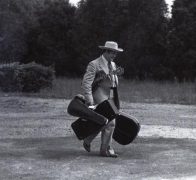
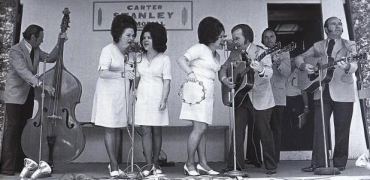
 Since the days of Andrew Jackson, and at least to 1968 or so, the majority of the white plain folk tended to be Democratic. They valued hard work and those who struggled and survived against adversity; they were suspicious of monopolies and nonproducers--bankers, lawyers, speculators, or, at the other end of the spectrum, people who lived on welfare or who otherwise lived off the labor of others. Southern working folk were usually warm, comforting, and hospitable to those who lived within or who fit the social confines of their circle of familiarity. They were prejudiced against strangers or outsiders, non-Christians, foreigners, blacks, gays, or social deviants.
Since the days of Andrew Jackson, and at least to 1968 or so, the majority of the white plain folk tended to be Democratic. They valued hard work and those who struggled and survived against adversity; they were suspicious of monopolies and nonproducers--bankers, lawyers, speculators, or, at the other end of the spectrum, people who lived on welfare or who otherwise lived off the labor of others. Southern working folk were usually warm, comforting, and hospitable to those who lived within or who fit the social confines of their circle of familiarity. They were prejudiced against strangers or outsiders, non-Christians, foreigners, blacks, gays, or social deviants.


 It's hard work, yet they seem to be relaxed and happy.
The lyrics often tell sad stories at toe-tapping or breakneck speed.
It's hard work, yet they seem to be relaxed and happy.
The lyrics often tell sad stories at toe-tapping or breakneck speed.

 This original country sound first flowered during the Depression. It was fertilized by blues,
gospel, string-band hoedowns, Appalachian balladry, work songs and
vaudeville hokum. Its practitioners were small-time entertainers who led
itinerant lives as they traveled from one schoolhouse show to the next,
from one radio barn dance to the next, from one makeshift recording
studio to another.
Despite the hard economic times, record companies and radio stations
discovered an enormous hunger for the homey sounds of The Carter Family,
the rowdy blues of Jimmie Rodgers, the saucy humor of Uncle Dave Macon,
the dazzling fiddling of Arthur Smith and the scintillating blues moans
of countless slide guitarists, harmonica men and jug-band songsters. That
hunger for emotional truth gave us our multi-million dollar music
industry.
The razzmatazz of western swing, the whipped-dog whine of honky-tonk
music, the creamy crooning of singing cowboys, the itchy-pants yelp of
rockabilly and the suburban gleam of The Nashville Sound seemed to drown
out the innocence of this rustic, acoustic kind of country. But it has
survived. Now called "old-time music" this style thrives at the more than
500 bluegrass festivals, fiddle contests and folk gatherings that are
staged every year in America.
You won't hear it on country radio. And it flies beneath the commercial
radar of most record shops. So for those whose musical tastes are shaped
by the great, gray behemoth that is the modern entertainment business,
this music does sound obscure. Even exotic.
The reason for our using so much of the era's music in the movie was
simple, explains Ethan Coen. We have always liked it. The mountain
music, the delta blues, gospel, the chain-gang chants, would later evolve
into bluegrass, commercial country music and rock 'n' roll. But it is
compelling music in its own right, harking back to a time when music was
a part of everyday life and not something performed by celebrities. That
folk aspect of the music both accounts for its vitality and makes it fold
naturally into our story without feeling forced or theatrical.
(
This original country sound first flowered during the Depression. It was fertilized by blues,
gospel, string-band hoedowns, Appalachian balladry, work songs and
vaudeville hokum. Its practitioners were small-time entertainers who led
itinerant lives as they traveled from one schoolhouse show to the next,
from one radio barn dance to the next, from one makeshift recording
studio to another.
Despite the hard economic times, record companies and radio stations
discovered an enormous hunger for the homey sounds of The Carter Family,
the rowdy blues of Jimmie Rodgers, the saucy humor of Uncle Dave Macon,
the dazzling fiddling of Arthur Smith and the scintillating blues moans
of countless slide guitarists, harmonica men and jug-band songsters. That
hunger for emotional truth gave us our multi-million dollar music
industry.
The razzmatazz of western swing, the whipped-dog whine of honky-tonk
music, the creamy crooning of singing cowboys, the itchy-pants yelp of
rockabilly and the suburban gleam of The Nashville Sound seemed to drown
out the innocence of this rustic, acoustic kind of country. But it has
survived. Now called "old-time music" this style thrives at the more than
500 bluegrass festivals, fiddle contests and folk gatherings that are
staged every year in America.
You won't hear it on country radio. And it flies beneath the commercial
radar of most record shops. So for those whose musical tastes are shaped
by the great, gray behemoth that is the modern entertainment business,
this music does sound obscure. Even exotic.
The reason for our using so much of the era's music in the movie was
simple, explains Ethan Coen. We have always liked it. The mountain
music, the delta blues, gospel, the chain-gang chants, would later evolve
into bluegrass, commercial country music and rock 'n' roll. But it is
compelling music in its own right, harking back to a time when music was
a part of everyday life and not something performed by celebrities. That
folk aspect of the music both accounts for its vitality and makes it fold
naturally into our story without feeling forced or theatrical.
(